Almond tuiles
A recipe from cooking-ez.com August 21th 2019397 K4.3
For 30 tuiles, you will need:
- 1 20 g butter
- 2 100 g flakeds almonds
- 3 75 g caster sugar
- 4 15 g flour
- 5 60 g egg white
- 6 5 tablespoons milk
- Total weight: 345 grams
Times:
| Preparation | Resting | Cooking | Start to finish |
|---|---|---|---|
| 30 min. | 30 min. | 20 min. | 1 hour 20 min. |
Step by step recipe
| 1 | Preparing the mixtureMelt 20 g butter in microwave oven or in a bain marie. | 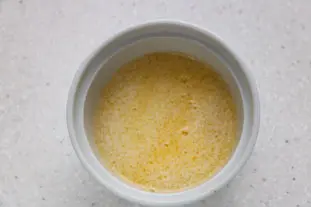 |
| 2 | In a bowl mix 100 g flakeds almonds, 75 g caster sugar and 15 g flour. | 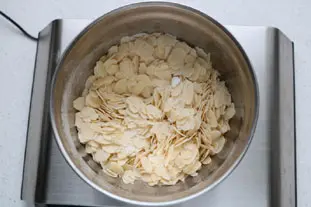 |
| 3 | Add melted butter and 60 g egg white, mix well, then refrigerate for approximately 30 minutes. | 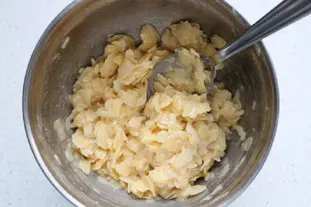 |
| 4 | Shaping tuilesPreheat the oven to 360°F (180°C). Put a cooking parchment on a baking sheet, deposit small heaps of mixture, approximately the size of a 2 € (or £2) coin. They should not be too close together because they will spread out flat. | 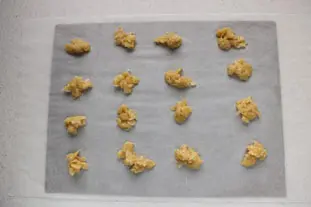 |
| 5 | With a fork dipped in milk, flatten each heap of mixture carefully. The more your future tuile is flattened, the crisper and thinner it will be after cooking. | 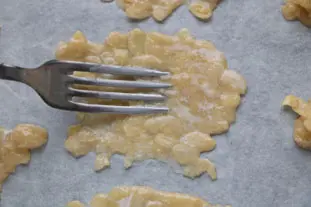 |
| 6 | Don't worry if you have some "holes" in the middle of tuiles, they won't show after cooking. | 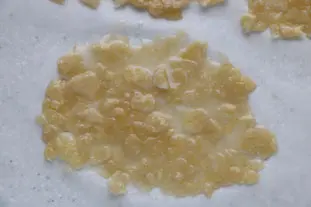 |
| 7 | If you prefer regular shape, still using the fork dipped in milk, even up the edges of your future tuiles. | 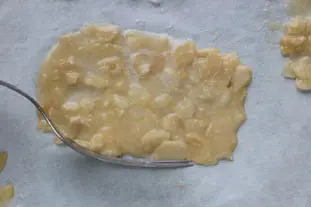 |
| 8 | BakingDo this with all the small heaps.And cook in the oven for 10/15 minutes. Watch carefully for colouration, especially towards the end of cooking time. The ideal tuile is (according to some) brown around the edge, and still quite pale in the middle. |  |
| 9 | As soon as the tuiles are cooked, you need to remove the baking sheet from the oven as quickly as possible, because hot the tuiles are still soft and easy to handle. But as soon as they cool, they harden and become brittle. So as quickly as possible, remove tuiles from paper using a palette-knife, and place them on a rack to cool. If you wait too long, they will cool on the paper and stick to it firmly, and then will inevitably break when you try to separate them, which would be a pity... | 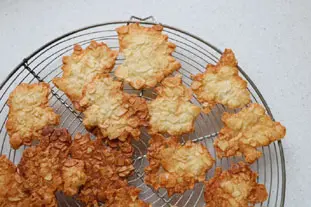 |
| 10 | Wait until they have cooled and become very crisp before eating. | 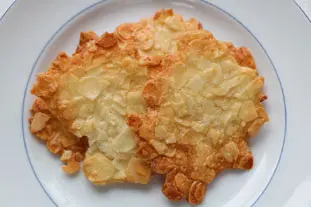 |
| 11 | Curved tuilesIf you want to have "professional" tuiles, i.e. evenly curved tuiles, as soon as they come off the paper you must mould them over something round like a glass, a baguette mould or even a proper tuile mould which is a kind of non-stick channel. The tuile (still hot) will mould under its own weight and set to this shape as it cools. | 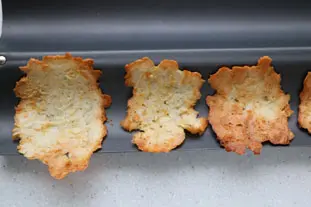 |
| 12 | Let cool before unmould, curved. | 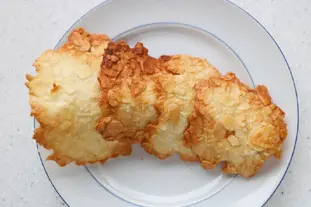 |
Remarks
The tuiles should be kept in an airtight tin, but unfortunately not for very long as they will go soft.For the ideal tuile about which I spoke before, it is also a matter of taste, I am the only one at home to prefer them well cooked (no "white" in the middle), well browned and very crisp.
To serve an ice cream or a sorbet with a tuile stuck in the top is a very very good idea.
View this recipe : https://cooking-ez.com/desserts/recipe-almond-tuiles.php
November 16th 2025.
